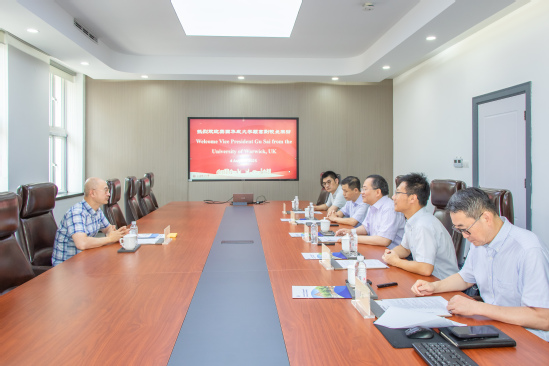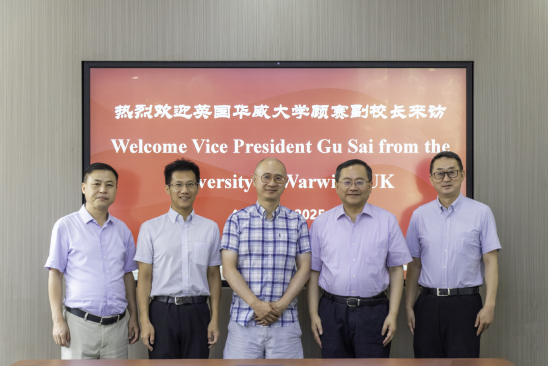On the morning of August 4, Professor Gu Sai, Deputy Pro-Vice-Chancellor of the University of Warwick, Fellow of Royal Academy of Engineering, visited the Fuxing Road Campus of USST. He was received by President Zhu Xinyuan, alongside representatives from Party Committee of USST, International Affairs Office of USST and SBC-USST.
President Zhu extended a warm welcome to Professor Gu Sai and provided a comprehensive overview of USST’s history, disciplinary strengths, talent development and international engagement, as well as the distinctive one-to-N consortium model of SBC. He noted that as a university with a rich heritage and distinct strength in science and engineering, USST has consistently explored new ways for international engagement and pioneered innovative models for international education. This commitment has led to the establishment of multifaceted, multi-channel, and comprehensive partnerships with leading universities worldwide.
SBC, drawing on the University's strong legacy of internationalisation, has partnered with nine UK universities, including the University of Sheffield and the University of Leeds. It has achieved remarkable outcomes since its establishment in 2006, making it an exemplary model of Sino-British educational collaboration. President Zhu emphasised that UK universities are key partners for USST, and expressed hope that this meeting would serve as an opportunity to further leverage the strengths of both institutions. He proposed enhancing cooperation through faculty and student exchanges, joint programme development, and collaborative efforts in curriculum design, scientific research, and cultural integration to establish a new paradigm in international higher education collaboration.
Professor Gu Sai expressed his gratitude for the warm reception and spoke highly of USST’s distinct international characteristics and SBC’s one-to-N model. He noted that the University of Warwick, with its strong research orientation and close industry-academia ties, shares similar values and strategic priorities with USST, presenting broad opportunities for collaboration in education and research. He proposed leveraging the research capabilities and faculty expertise of both sides, building on successful models of joint postgraduate and PhD programmes, and utilising initiatives such as Warwick’s Seed Fund and scholarship schemes to promote student mobility, faculty exchanges, teaching collaboration, joint research, and disciplinary co-development. The goal, he added, is to cultivate high-level interdisciplinary talents with international perspectives and innovative capabilities.
During the meeting, both sides engaged in in-depth discussions on launching dual-degree collaborative undergraduate programmes, joint postgraduate programmes, postdoctoral stations, research collaboration, and resource sharing. They reached consensus on promoting faculty and student exchanges, joint talent development, and high-quality foundation year programmes, laying a solid foundation for further cooperation.

Discussion Session

Group photo





